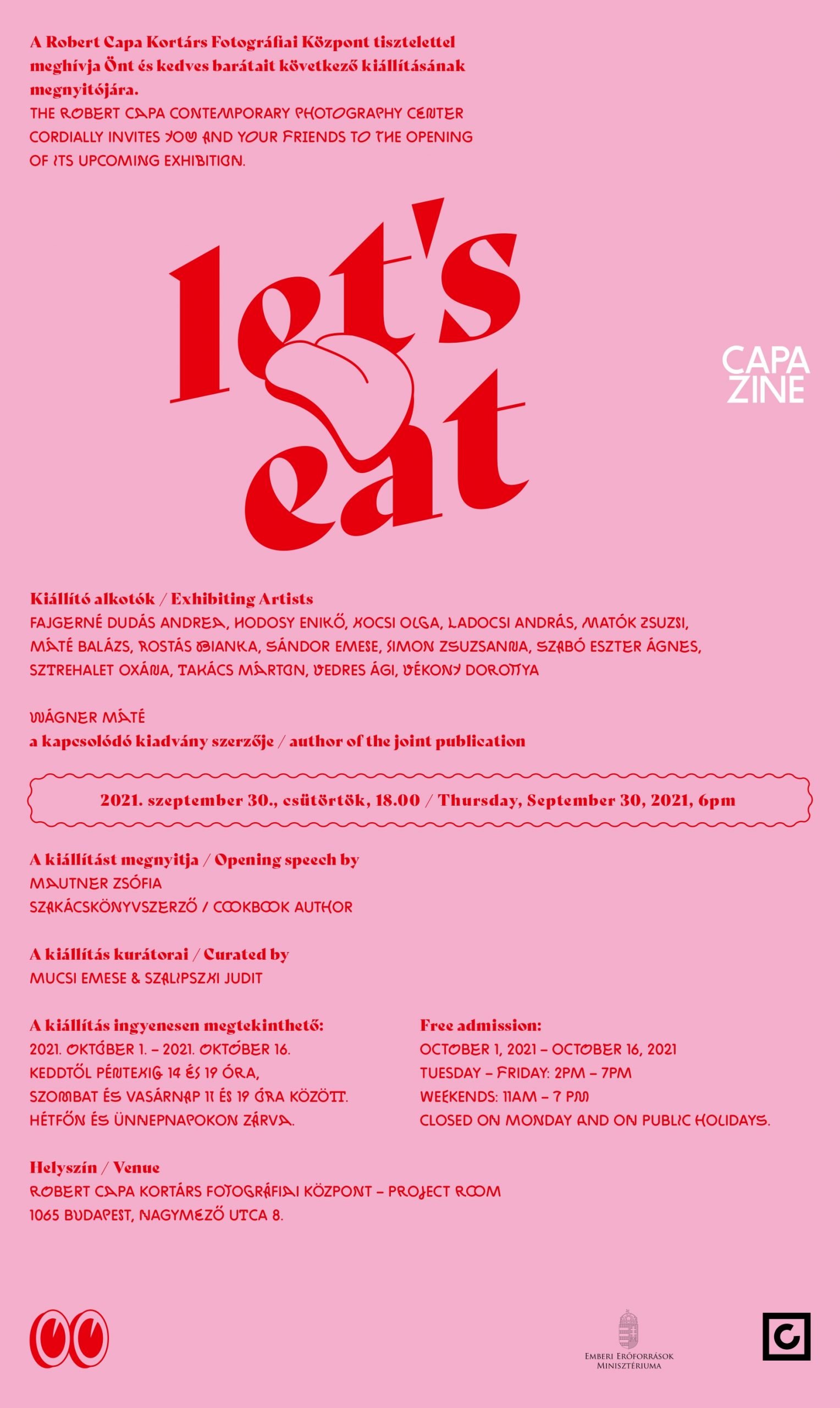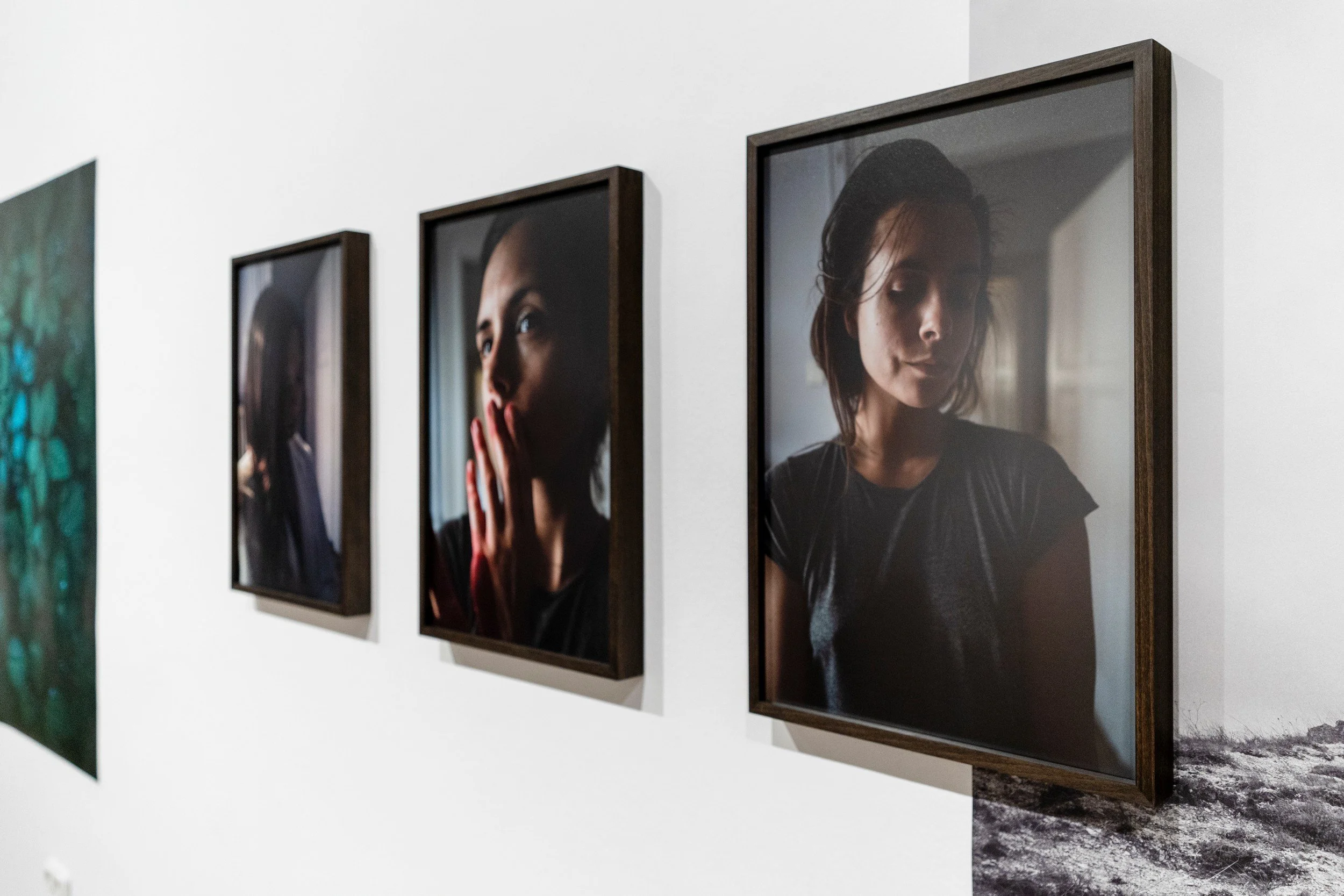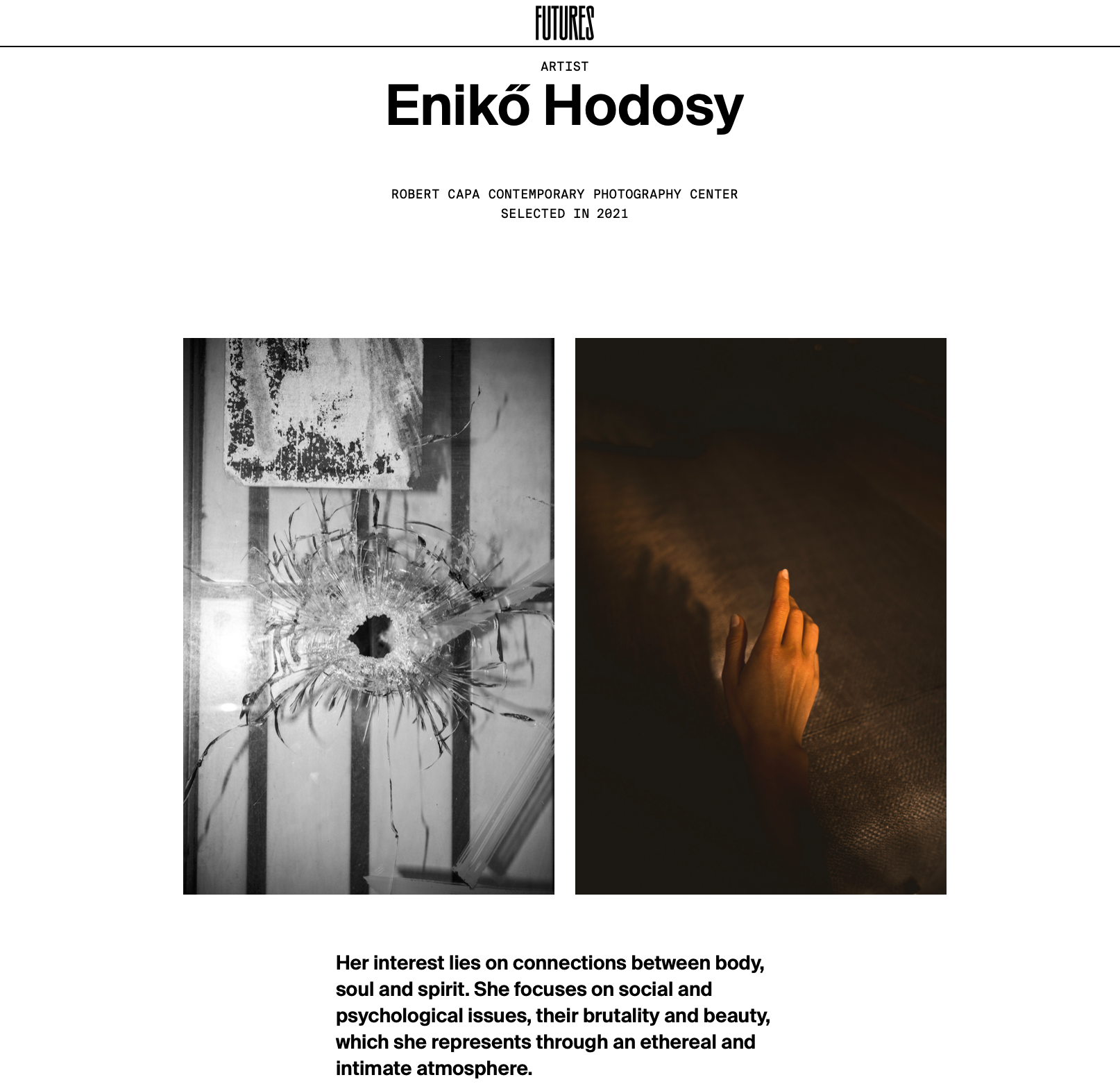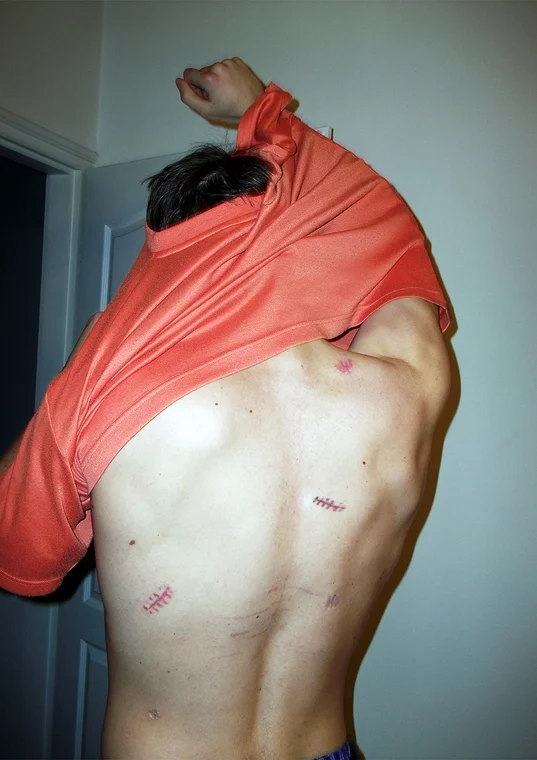Free admission:
Tuesday – Friday: 2pm – 7pm
Weekends: 11am – 7 pm
Closed on Monday and on public holidays
Capa Center – Project Room
Curators: Emese Mucsi, Judit Szalipszki
Exhibiting Artists: Andrea Fajgerné Dudás, Enikő Hodosy, Márton K. Takács, Olga Kocsi, András Ladocsi, Zsuzsi Matók, Balázs Máté, Bianka Rostás, Emese Sándor, Zsuzsanna Simon, Eszter Ágnes Szabó, Oxána Sztrehalet, Márton Takács, Ági Vedres, Dorottya Vékony, Máté Wágner
„The visualist regime of modernity, in fact, prides itself on its transparency: everything can be seen, everything can be known, nothing is withheld from our inquisitive and acquisitive eyes. The microscopic view and the panoramic view intersect to display our world to us inside and out. However, the very visualism of modernity has, so to speak, thrown a cloak of invisibility over the sensory imagery of previous eras. So thick is this cloak that one can scarcely see through it, or even recognize that there might be some thing worth exploring underneath. When this cloak is lifted, however, the cosmos suddenly blazes forth in multisensory splendour: the heavens ring out with music, the planets radiate scents and savours, the earth springs to life in colours, temperatures, and sounds.” /Constance Classen: The Color of Angels: Cosmology, Gender and the Aesthetic Imagination (London and New York: Routledge, 1998), page 1/
Organized by the Robert Capa Contemporary Photography Center for the third time, the annual CAPAZINE workshop focused on the relationship of food, eating, and photography in 2020. In this framework, participants examined eating as an everyday personal action as well as an act with an impact at the political, communal, and global scales. Besides being one of the most popular themes of object photography, today food has become a fundamental area of artistic experimentation concerning humanity’s future. During the nearly one-year-long process of the workshop, the photographer, artist, food stylist and art critic participants (Andrea Fajgerné Dudás, Enikő Hodosy, Márton K. Takács, Olga Kocsi, András Ladocsi, Zsuzsi Matók, Balázs Máté, Bianka Rostás, Emese Sándor, Zsuzsanna Simon, Eszter Ágnes Szabó, Oxána Sztrehalet, Márton Takács, Ági Vedres, Dorottya Vékony, Máté Wágner) formed seven groups that created seven original photography projects. To achieve this, the members were presented with various informative and inspirational thematic talks pertaining to, among other things, the relationship of eating and fine art, the symbolic role of food in literature and cinematography, and the potential lying in the photographic representation of food. They were also introduced to several creative practices dealing with food as a complex phenomenon embedded into different ecological systems.
Focusing on tasting and eating in a photography workshop is an unusual challenge that could be interpreted as an attempt at reconciling multiple distant sensory modalities. The hegemony of vision is a prevailing thought in our culture since Aristotle. Sight and hearing being considered as the ultimate theoretical and intellectual senses are still being recognized as the proper means of objectivity, scientific research, and search for the truth in general. On the other hand, olfactory, gustatory, haptic, and other senses have long been referred to as inferior modes of perception, while scents and tastes have been excluded from the artistic experiences that were considered describable along the aesthetic categories of the Western cultural tradition. However, with the Enlightenment, this hierarchy of senses that had ruled for centuries somewhat loosened, so much so that questioning the primacy of vision became a topic of increasing importance for the academic community. From the 1980s, a kind of sensory turn started to emerge in the humanities and social sciences, which was surely supported by the defixation on the Occidental gaze and the new developments in anthropology venturing into cultures which turned out to be not necessarily based on the supremacy of vision. In this way, by today it is obvious for us that our identity is shaped by all our senses, that our layered perception plays a crucial role in the formation of memories, and that any sensory impression always activates multiple sensory areas in our brain. Observing a picture is a multisensory experience even if one is unaware.
Capturing and examining these multisensory impressions was an important feature of the CAPAZINE workshop, even though participants were rarely able to share live experiences because, due to the pandemic, there were virtual meetings only. In the past year, things have been radically transformed by the pandemic: personal encounters were replaced by digital get-togethers, community reunions were limited, and all this has significantly changed our relationship with food. Over the course of a few weeks, the coronavirus has shown that owing to its lack of resilience, the global food industry, laden with overproduction and wasting issues, inequitable distribution, and several other problems, is highly vulnerable to such a challenging situation. The crisis caused by COVID-19 has thus aimed our attention to what gets on our plates and in what ways. And as the most common symptom of the virus, those who were infected temporarily lost their senses of taste and smell, and were forced to experience how disoriented and joyless life could be without flavors and odors.
Eating is traditionally associated with a sense of convenience and ease, thus, understandably, in such a precarious situation caused by the pandemic, many strived to exercise control in their lives through the act of accumulating food supplies at home or by performing care through the act of cooking. That is exactly why dishes that provide comfort to consumers and improve their well-being and mood are called comfort food. These kinds of food are typically high in carbs and tend to evoke various childhood memories, hence, in addition to raising blood sugar levels, they can sneak a moment of bliss into everyday life – just think of Marcel Proust’s madeleine scene, cited countless times ever since being published. Probably partly due to this desire for company free from anxiety and the virus, several of the groups eventually came up with photo series focusing on home-style dishes and traditional foodstuff, like the chicken soup, the Wiener schnitzel, or the sausage with paprika – food typically appearing on the dining table on Sunday family lunches. Many of us carry personal stories related to one such taste or dish or another; we hope that these gentle triggers will help our viewers connect to the issues raised by the photographers and reminisce on these events, be it a sweet or bitter memory of theirs.
Emese Mucsi & Judit Szalipszki
curators, leaders of the CAPAZINE – LET’S EAT workshop














